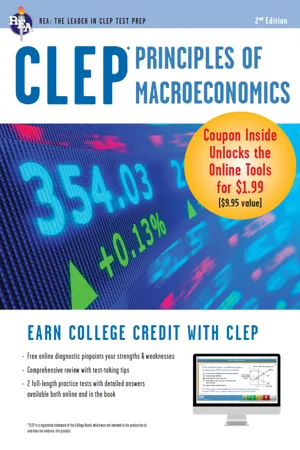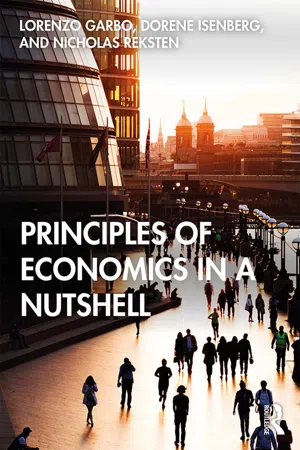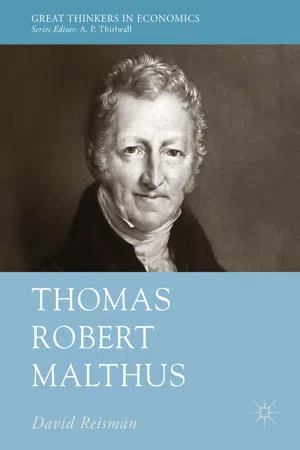Circular Flow of Money
The circular flow of money is a concept that illustrates the continuous movement of money through the economy. It shows how households receive income from firms in exchange for labor and then spend that income on goods and services produced by the firms. The firms, in turn, use the revenue to pay for factors of production, creating a circular flow of money.
6 Key excerpts on "Circular Flow of Money"
- eBook - ePub
- A J Brown(Author)
- 2013(Publication Date)
- Routledge(Publisher)
...CHAPTER 3 The Flows of Money MOST economies, as we have seen, are market economies in which individual families or productive enterprises do not produce most of what they themselves consume or store up, and do not themselves consume or store up most of what they produce—they sell most of their products for money and buy with money most of what they consume, or of what they add to their stocks of goods and equipment. In such an economy, therefore, most production is not simply an immediate attempt to meet the producers’ wants, and, except where production is centrally planned, the aggregate investment which comes about is not the result merely of decisions that so much ought to be accumulated. Between production on the one hand and consumption or accumulation on the other there intervene one or more exchanges of goods or services against money. The Circular Flow In order to form a clear picture of the monetary machinery by which a market economy works, let us start with the simplest kind of situation, in which all output is produced by enterprises (not necessarily private) for sale, and in which there is no saving, no foreign trade, and no taxation. In such a community, a sum of money equal to the full value of output is paid out in each period by enterprises to the people who provide them with labour, capital, or materials, or who draw profits from them—that is to say, this sum is paid out to households. The whole of this money is then paid back by households to enterprises in exchange for the goods which they want to consume. Now, it can be seen that, if the volume of production does not change, a simple system of this kind can go on working indefinitely, with a constant amount of money. Ignore profits for a moment and suppose that all the payments connected with production consist of wages, salaries, and similar items which are paid out at the end of each week...
- Richard Sattora(Author)
- 2012(Publication Date)
- Research & Education Association(Publisher)
...Input resources flow from the Household to Businesses in the resource market. This purchase of input from the Household is the cost of production to a business. The sale of these resources by Households to Businesses generates Household income (wages, rents, interest, and profits). Remember, one of the key features of a free market economy is that the means (inputs) of production are owned by the individual. The product market is the place where Businesses sell their goods and services to Households. This sale to the Household is the source of a Business’s revenue. When a Business subtracts its costs from this revenue, profit/loss is determined. This consumption of goods and services by Households is where the income earned from the resource market is expended. When a Household subtracts its consumption expenditures from its income, savings or debt are determined. Figure 2–13 Circular Flow Model Now add the public sector of Government to the private sector of Households and Businesses (figure 2–14) on the circular flow model. Notice that the Government purchases goods and services from the product market and employs input factors from the resource market. These purchases are the origin of our public goods, such as roads and bridges. Government finances its purchases through taxation of the private sector. This flow of goods, services, and tax dollars (subsidy and transfer payments) suggests how Government might try, through fiscal policy, to stabilize the economy. Figure 2–14 Circular Flow Model Today, the majority of the world’s nations have agreed to follow many of these principles, and joined together in the World Trade Organization. This organization has contributed to increased specialization in the world, creating greater productive efficiency. Nations today seek absolute or comparative advantage in production, resulting in greater trade and thus increasing their standard of living...
- eBook - ePub
- Lorenzo Garbo, Dorene Isenberg, Nicholas Reksten(Authors)
- 2020(Publication Date)
- Routledge(Publisher)
...5 Understanding the wealth of nations National income accounting 5.1 Circular flows and fundamental macroeconomic identities We now need to shift our focus from a micro to a macro level. In the microeconomics section of the book we paid attention to the behavior of single agents of the economy, specifically the consumer and the producer (the firm). The variables we used were pertinent to these agents: fundamentally the relationships between price and quantity of goods and services, studied from the point of view of consumers and suppliers, respectively. A macroeconomic story, and some macroeconomic vocabulary When we approach the macroeconomy, the aggregate economy of a country, a region, and so on, the functions of the various economic agents change, as agents are not seen only as relating to a specific market but become the integrated engines of the economy taken as a whole. Thus, households not only demand goods and services, but also supply labor and capital to the production processes of the country. In exchange, they receive income that can be used to purchase consumption goods and services, pay taxes, and add to the households’ savings. Households’ savings are placed in the financial sector : banks receive savings and turn them around in the form of lending to firms for their investments, i.e., to purchase capital goods that will further their production processes in the future...
- eBook - ePub
- Joseph A Schumpeter(Author)
- 2017(Publication Date)
- Routledge(Publisher)
...Stocks in this sense are comparable to a river-bed rather than to the water which flows through it. The stream is fed from the continually flowing springs of labor-power and land, and flows in every economic period into the reservoirs which we call income, in order there to be transformed into the satisfaction of wants. We shall not enlarge upon this, but only observe shortly that it involves accepting a definite concept of income, namely Fetter’s, and excluding from its scope all those goods which are not regularly consumed. In one sense the circular flow ends at this place. In another sense, however, it does not, for consumption begets the desire to repeat it and this desire again begets economic activity. We shall be pardoned if we have not in this connection spoken of quasi-rent as we ought to have done. More serious at first sight appears to be the absence of any mention of saving. Yet this point will also be explained. In any case, saving would not play a great part in economic systems displaying no change. The exchange value of every quantity of a commodity for every individual depends upon the value of the goods which he can procure and actually intends to procure with it. As long as the latter is undecided, this exchange value will undoubtedly fluctuate according to the possibilities conceived at the time, and likewise it will alter if the individual alters the direction of his demand. Yet, when the best employment in exchange is found for any good, the exchange value remains at one and only one definite height, given constancy in the conditions...
- eBook - ePub
- Joseph A. Schumpeter(Author)
- 2021(Publication Date)
- Routledge(Publisher)
...Here too we can assert that we change nothing essential if we imagine that every individual piece of money travels exactly the same route in every economic period. This relation of real income and money income also determines the changes in the value of money. 52 We have so far considered money solely as a circulating medium. We have had in view the determination of the value of only those quantities of money which are actually used for the movement of the mass of commodities periodically. Obviously there are also in every economic system, for well known reasons, non-circulating quantities of money, and the determination of their value is not yet explained. For so far we have not learned of any employment of money which necessitates an accumulation beyond the measure that enables the individual to pay for his current purchases. To this point we must return later. We shall not go into it further here, but content ourselves with having explained the circulation and determination of the value of those quantities of money which correspond to the chief exchange transactions which we have depicted. In any case, in the normal circular flow, which we have in view here, no holding of important stocks of money for other purposes would be necessary. We have also neglected another element. Purchasing power is employed not only to carry out the exchange of consumption goods against the services of labor and land, but also to transfer the possession of landed property itself, and furthermore purchasing power itself is transferred. We could easily take account of all these elements, but they have an essentially different significance for us from that of those which we can analyse within the framework of our present argument. We may only briefly point out that within the continually recurring economic process which we have been describing there would be little room for these things. Transfers of purchasing power as such are not necessary elements of this process...
- eBook - ePub
- David Reisman(Author)
- 2018(Publication Date)
- Palgrave Macmillan(Publisher)
...© The Author(s) 2018 David Reisman Thomas Robert Malthus Great Thinkers in Economics https://doi.org/10.1007/978-3-030-01956-3_8 Begin Abstract 8. The Circular Flow David Reisman 1 (1) Nanyang Technological University, Singapore, Singapore 8.1 Wealth 8.2 Value 8.3 Say’s Law 8.4 Oscillation and Trend 8.5 The Golden Mean 8.6 Restoring the Balance References Keywords Circular flow Aggregate over-supply Involuntary unemployment Wealth Value End Abstract There is production: land, labour and capital are combined in such a way as to generate final output where previously there had been only promise and potential. There is realisation: consumption, investment, government expenditure and net exports are national expenditure that finds the national product a home. A nation wants sustainable growth in its productive capacity without wasteful over-heating, underperformance or stagnation. A nation does not always get what it wants. Malthus was the spiritual heir to Adam Smith on self-sustaining growth. Yet he was also the witness to wars, disruptions, downturns and unemployment. If the population mechanism did not condemn honest men and women to vice and misery, then the circular flow might itself leave them hungry and poor. 8.1 Wealth Today, the definition is different. In the shadow of great economic statisticians like James Meade, Richard Stone and Simon Kuznets (Reisman 2017 : 20–24), the national product is defined to be the sum of new value added in a nation in a reporting year. Wherever possible it is measured through revealed preferences and subjective satisfactions rather than through the accountant’s paid-out costs or physical quantities. No distinction is made between goods and services. Primary, secondary or tertiary, if it crosses the frontier from firms to households it is a part of the national income. Today, every student has been schooled in the standard catechism. Things were different in the crucible years...





